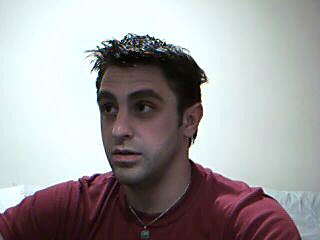 Let's see how a blog is defined at Wikipedia.
Let's see how a blog is defined at Wikipedia.Now see one simple example of how a Moroccan student used his blog to post messages for an extracurricular club, the Student Leadership Club.
Here's another example that might be familiar to you, the Senior English Language Fellow's ELT Mexico Bulletin. See anyone you know? An important part of blogging is the ability to post comments, making these Web sites interactive. Post a comment to one of the entries on this blog to practice this. (Unless you are logged in, you will need to sign your comment in the body of your message. If you click "anonymous" the space to sign in will disappear.)
Here's an excellent blog where a university instructor at Arkansas Tech posts assignments and resources for his students - ELI Student Network. (Hint: Try the listening practice at the TOEFL Podcast link under TOEFL Practice at the right.)
There are also of course blogs that teachers post for other teachers. Look at these examples: Writing Topics, Tech AUC 07, & ELT Bahrain. (Hint: The last two are mine ;)
Then there are blogs already begun by your colleagues! Sharing this World, Secundaria 34, & English Teachers.
Welcome to the world of blogging!
To start a new account at Blogger, you first need a "Gmail" email account (G is for Google). An invitation to open this account has already been sent to your email. Go to your inbox and look for the invitation- don't forget to check your junk mail!!
Start a Gmail account and make sure to remember your login and password.
Go to Blogger and sign in as a "New Blogger."
Be prepared to decide:
- the title of your blog
- the URL (Web address) of your blog
You need to make a first post before you can see your blog online.
After your blog is created and you send a short welcome message, you might want to change:
- Format - Time Zone
- Comments - Who can comment? (Anyone)
Practice posting messages and pictures on your blog and commenting on someone else's blog.
(To save a picture from the Internet: Right click on the picture you want, select "save as" and decide where to save it. You need to locate it later when you are ready to upload it to your blog.)
You can have more than one blog with the same account. The "dashboard" or panel let's you choose which blog to work with in the same Gmail account.




 http://teachergeorgina.blogspot.com/
http://teachergeorgina.blogspot.com/



